Budget-Friendly Culinary Journey Through Normandy: Top Food Experiences
A Culinary Journey Through Normandy: A Budget-Friendly Adventure As I stepped off the plane at Paris Charles de Gaulle Airport, the excitement of my upcoming culinary adventure in Normandy bubbled up inside me. The promise of creamy Camembert, crisp apple cider, and freshly caught seafood had been tantalizing my taste buds for weeks. But before I dive into the mouthwatering details of my trip, let me share a little secret that made this journey possible without breaking the bank.
TRAVEL
Michael
7/20/202414 min read

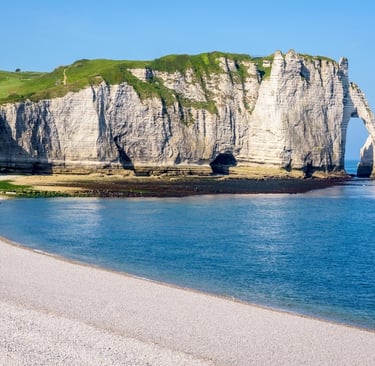
A Culinary Journey Through Normandy:
A Budget-Friendly Adventure
As I stepped off the plane at Paris Charles de Gaulle Airport, the excitement of my upcoming culinary adventure in Normandy bubbled up inside me. The promise of creamy Camembert, crisp apple cider, and freshly caught seafood had been tantalizing my taste buds for weeks. But before I dive into the mouthwatering details of my trip, let me share a little secret that made this journey possible without breaking the bank.
Honfleur


Day 1: Rouen – A Taste of History
My culinary journey through Normandy began in Rouen, the historic capital of the region. After a smooth flight (thanks to the great deals I found on Expedia), I picked up my rental car at the airport.
As I drove into Rouen, the city's rich history immediately enveloped me. The towering spire of Rouen Cathedral, immortalized in Monet's paintings, guided me towards the city center. I parked my car and set out on foot, eager to explore the maze-like streets of the old town.
The medieval half-timbered houses that line the narrow streets of Rouen are a sight to behold. These beautifully preserved buildings, with their wooden frames and plaster walls, transported me back in time. Some of these structures date back to the 14th century, their slightly crooked facades and overhanging upper floors creating a charming, almost fairy-tale atmosphere. I couldn't help but stop every few steps to admire the intricate carvings and vibrant colors of these architectural marvels.
As I wandered, I came across the famous Gros Horloge, a 14th-century astronomical clock that still keeps time for the city. Its ornate golden face and Renaissance architecture provided a perfect photo opportunity and a moment to appreciate Rouen's blend of medieval and Renaissance influences.
The winding streets eventually led me to the Place du Vieux-Marché, the old market square. This historic site, where Joan of Arc was executed in 1431, now hosts a vibrant market and is surrounded by restaurants and cafes. The modern church of Saint Joan of Arc, with its unique architecture reminiscent of an upturned Viking ship, stands as a testament to the city's complex history.
Amidst this historical setting, I found my way to La Couronne, the oldest inn in France, dating back to 1345. The restaurant's facade, with its dark wooden beams and white plaster, blended seamlessly with the surrounding medieval architecture. As I stepped inside, the interior was a perfect mix of historic charm and elegant comfort. Exposed wooden beams crossed the ceiling, and soft lighting created a warm, inviting atmosphere.
I was seated at a table near a window, offering a view of the bustling square outside. The waiter, dressed in a crisp white shirt and black waistcoat, approached with a friendly smile. He explained that I was sitting in the very room where Julia Child had her first French meal in 1948, a experience that ignited her lifelong passion for French cuisine. I could almost feel the weight of culinary history surrounding me.
The waiter recommended starting with a local aperitif – Pommeau, a blend of apple juice and Calvados (apple brandy). As he poured the amber liquid into my glass, he explained that Pommeau is a protected appellation d'origine contrôlée (AOC) in Normandy, reflecting its importance in the local culture. The drink was a delightful balance of sweet and tart, with a warming alcohol kick that helped shake off the chill of the Norman afternoon.
For the main course, I couldn't resist ordering the canard à la rouennaise, also known as duck in blood sauce or pressed duck. This iconic dish of Rouen is not for the faint-hearted, but its rich, complex flavors were a revelation. The waiter explained the intricate preparation process: the duck is partially roasted, then its breast is removed and set aside. The rest of the carcass is pressed in a special silver press right at the tableside, extracting all the juices. These juices are then mixed with the duck's liver, cognac, and red wine to create a rich, velvety sauce.
The dish arrived beautifully presented – slices of pink duck breast fanned out on the plate, napped with the deep, glossy sauce. The first bite was a explosion of flavors – the tender, slightly gamey duck meat perfectly complemented by the intensely savory sauce. It was a dish that demanded to be savored slowly, each mouthful a meditation on the depth and complexity of French cuisine.
To accompany the duck, I chose a glass of local red wine, a Côtes du Rhône, its robust tannins and dark fruit notes standing up well to the rich flavors of the dish.
For dessert, I couldn't resist trying another Norman specialty – tarte aux pommes Normande. The buttery pastry was topped with slices of caramelized apples and a light, custardy filling, all dusted with powdered sugar. It was the perfect sweet end to a memorable meal, the tartness of the apples balancing the richness of the duck.
As I savored each bite, I couldn't help but reflect on how my budget-friendly approach to travel had allowed me to indulge in such a memorable dining experience. The money saved on cheap travel to France through Expedia meant I could fully immerse myself in the local cuisine without constantly worrying about my wallet. It was a perfect example of how smart planning can enhance a travel experience, allowing for those special splurges that create lasting memories.
After dinner, I took a stroll back to my hotel, the streets of Rouen now softly lit by street lamps, casting a golden glow on the medieval facades. The cool evening air was filled with the distant sounds of church bells and the murmur of diners at sidewalk cafes. As I walked, I felt a deep sense of satisfaction – not just from the excellent meal, but from the knowledge that this was just the beginning of my Norman culinary adventure. With a full stomach and a heart full of anticipation, I looked forward to what the rest of my journey would bring.
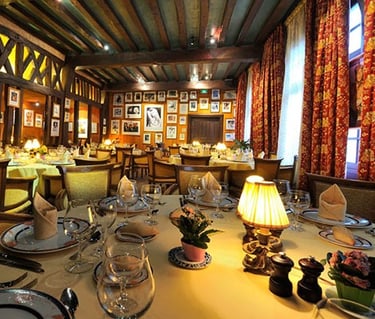





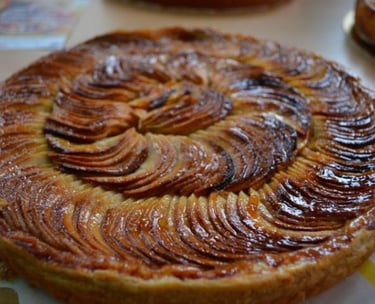

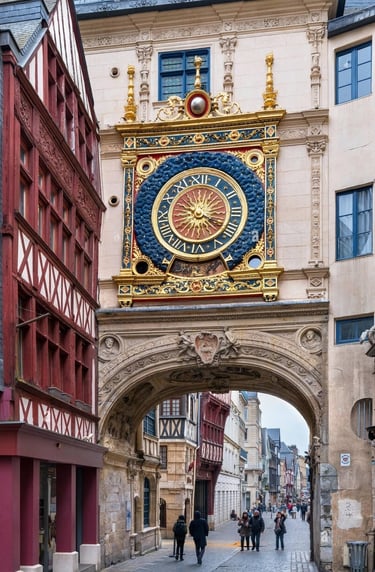

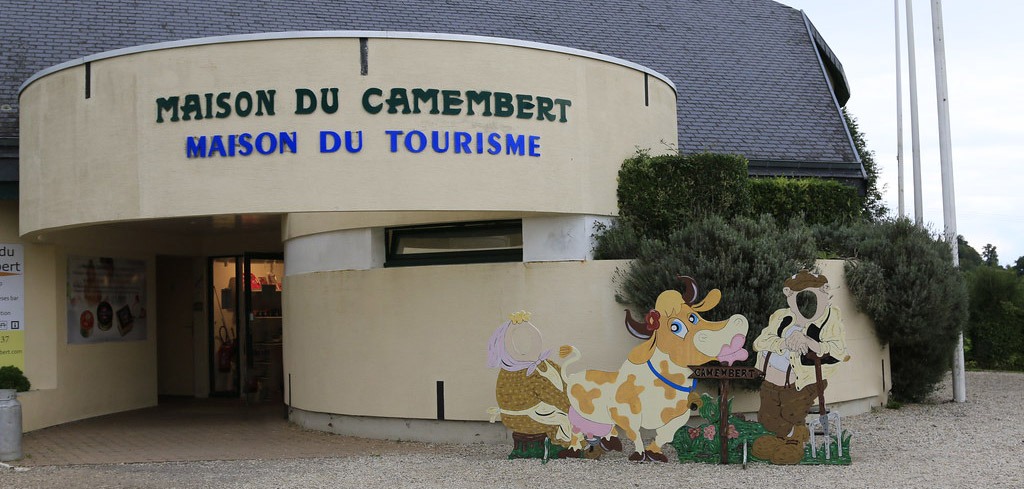

Day 2: The Cheese Trail
No trip to Normandy would be complete without exploring its famous cheese trail. I set out early, driving through the lush countryside dotted with apple orchards and grazing cows. My first stop was the village of Camembert, the birthplace of the iconic soft cheese that bears its name.
At the Maison du Camembert, I learned about the cheese-making process and the history of this beloved fromage. The highlight was, of course, the tasting. I sampled Camembert at various stages of ripeness, from young and firm to perfectly gooey. The earthy, mushroomy flavors paired beautifully with a glass of local cider.
Next on my cheese itinerary was Livarot, home to another Norman cheese classic. Often called "The Colonel" due to the stripes of raffia traditionally used to hold it together, Livarot has a pungent aroma and a rich, complex taste. At a local fromagerie, I watched skilled artisans handcraft this cheese and couldn't resist buying a wheel to enjoy later.
My final cheese stop for the day was Pont-l'Évêque. This small town produces a square-shaped cheese that's been made in the region since the 12th century. Its subtle, creamy flavor was a delightful contrast to the stronger cheeses I'd tasted earlier.
As I drove back to my hotel, my car filled with the aroma of my cheese purchases, My budget-friendly travel to France had allowed me to splurge on these local delicacies without guilt.
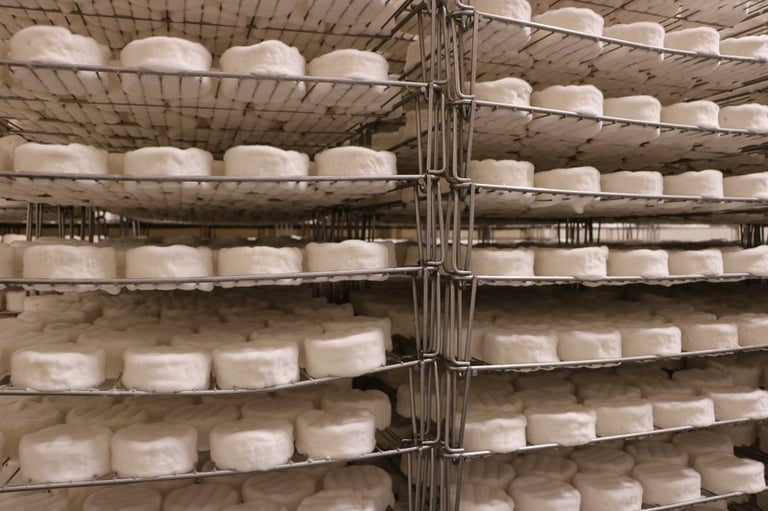


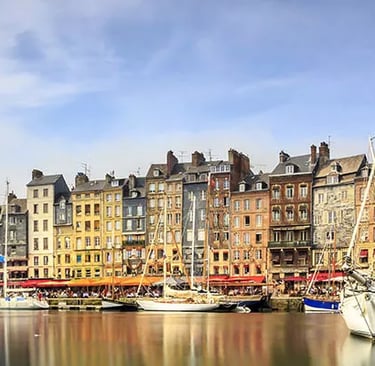
Day 3: Coastal Delights in Honfleur and the Normandy Shores
The next day, I headed to the charming port town of Honfleur, nestled where the Seine meets the English Channel. As I approached the coast, the salty sea air invigorated my senses, whetting my appetite for the day's adventures. Honfleur's picturesque harbor, the Vieux Bassin, lined with tall, narrow houses dating back to the 16th, 17th, and 18th centuries, has inspired artists for centuries, including Impressionist masters like Monet and Courbet. But while I was eager to soak in the visual feast, I was here for a different kind of artistry – the culinary kind.
Before diving into Honfleur's renowned seafood scene, I decided to explore the surrounding coastline. A short drive took me to the beautiful Plage du Butin, a pebbly beach offering stunning views of the Seine estuary and the impressive Pont de Normandie bridge. I took a leisurely walk along the shore, watching sailboats glide by and breathing in the invigorating sea air. The beach was dotted with locals and tourists alike, some brave souls even taking a dip in the bracing Channel waters.
Returning to Honfleur, I couldn't resist a quick detour to the Naturospace Butterfly House. This tropical greenhouse, home to hundreds of butterflies and exotic birds, was an unexpected delight. The lush vegetation and colorful winged inhabitants provided a stark contrast to the maritime atmosphere outside.
With my appetite thoroughly piqued by the sea air and coastal walk, I made my way to La Cidrerie, a rustic restaurant overlooking the old harbor. The restaurant's terrace offered a perfect view of the bustling port, where fishing boats were returning with their daily catch. Here, I indulged in a platter of fruits de mer – a mountain of ice piled high with a variety of seafood treasures. Plump oysters from nearby Utah Beach, briny clams, succulent mussels, juicy prawns, and tender whelks made up this oceanic feast. The briny flavors of the sea were perfectly complemented by a crisp glass of Muscadet, its citrusy notes enhancing the freshness of the seafood.
For my main course, I couldn't resist trying the local specialty – sole à la Normande. The delicate fish, likely caught just hours ago in local waters, was bathed in a rich, creamy sauce studded with mushrooms and shrimp. A side of locally grown vegetables, including the famous Normandy carrots known for their sweetness, completed the plate. It was a dish that truly captured the essence of Norman cuisine – simple yet indulgent, highlighting the quality of local ingredients and the bounty of both land and sea.
As I savored each bite, I chatted with my waiter about the local fishing industry. He explained how Honfleur's location at the mouth of the Seine made it an ideal spot for fishing, with a variety of species available throughout the year. The town's culinary tradition, he said, was deeply intertwined with its maritime heritage.
After lunch, I decided to walk off my meal with a stroll through Honfleur's charming streets. I wandered through the old town, admiring the half-timbered houses and quaint shops selling local specialties like Calvados and artisanal cheeses. The Église Sainte-Catherine, France's largest wooden church, was a particular highlight with its separate bell tower.
As the afternoon wore on, I found myself back at the harbor, watching artists set up their easels to capture the golden light on the water. The scene was so picturesque, that it was easy to see why this town had captivated so many painters over the centuries. I sat on a bench, enjoying a cone of artisanal ice cream flavored with local apples and caramel, a sweet tribute to Normandy's orchards.
Before heading back to my hotel, I took one last walk along the Jetée de l'Est, a long pier stretching out into the estuary. As I watched the sun begin to set over the water, painting the sky in hues of pink and orange, I reflected on how my cheap flights to France had been the gateway to this extraordinary culinary and coastal experience.
The day had been a perfect blend of coastal exploration and culinary indulgence, showcasing the best of what Normandy's shores had to offer. As I drove back to my accommodation, the taste of the sea still lingering on my palate, I felt grateful for the opportunity to experience this enchanting corner of France. Honfleur had shown me that sometimes, the most unforgettable meals come with a side of breathtaking views and rich maritime history.
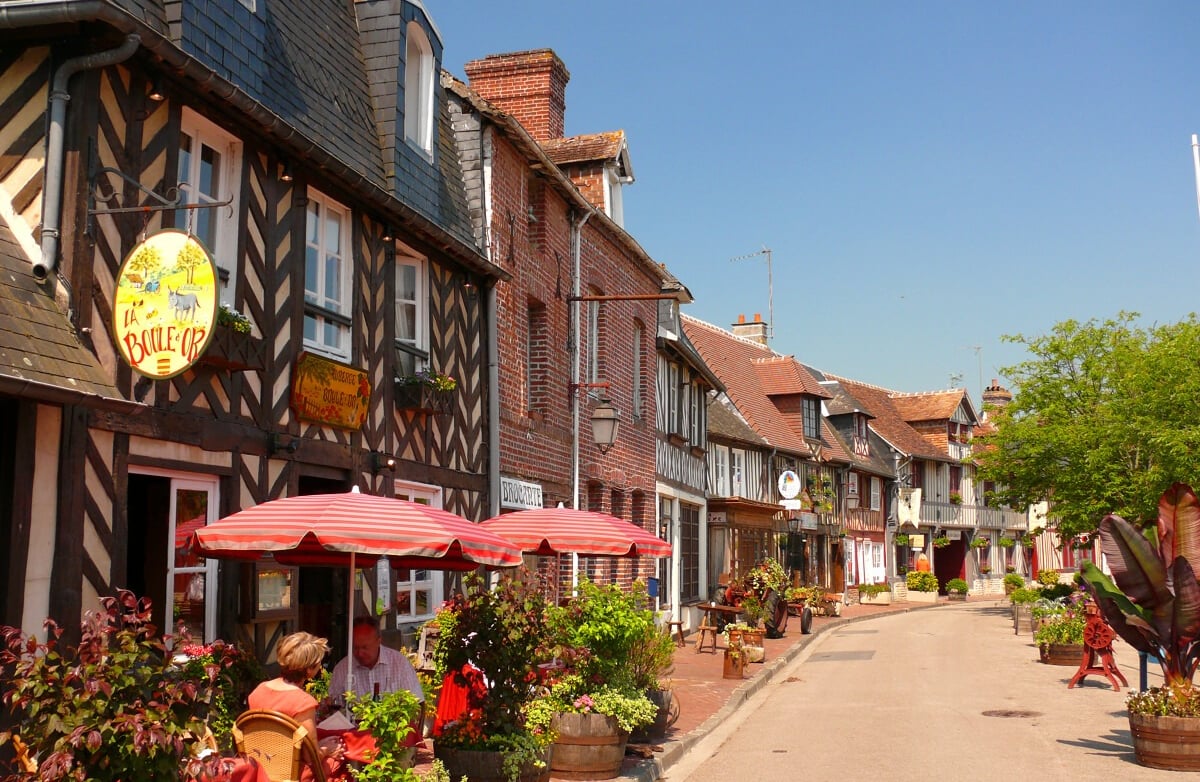

Day 4: Cider and Calvados in the Pays d'Auge
No culinary tour of Normandy would be complete without exploring its famous apple-based beverages. The Pays d'Auge region, with its rolling hills covered in apple orchards, was my destination for the day.
I started at the Château du Breuil, a picturesque 16th-century castle that now houses a Calvados distillery. During the guided tour, I learned about the process of transforming apples into this potent brandy. The aging cellars, filled with oak barrels and the heady aroma of apples and alcohol, were particularly impressive.
The tasting session was an education in itself. I sampled Calvados of different ages, from the young and fiery to the smooth, complex vintages aged for decades. The older varieties, with their notes of baked apple, vanilla, and spice, were truly extraordinary.
Next, I visited a traditional cider farm, where I saw the entire cider-making process, from apple pressing to fermentation. The farmer explained the difference between sweet, dry, and brut ciders, and I tasted each variety. The crisp, refreshing flavors were a delightful contrast to the potent Calvados.
For lunch, I stopped at a rustic farmhouse restaurant where I enjoyed galettes – savory buckwheat crepes filled with local ham, Camembert, and apples, of course. Washed down with a bottle of farm-fresh cider, it was the perfect meal to conclude my apple-themed day.
As I drove back to my hotel, the golden afternoon light illuminating the orchards, I felt a deep appreciation for the agricultural heritage of Normandy.
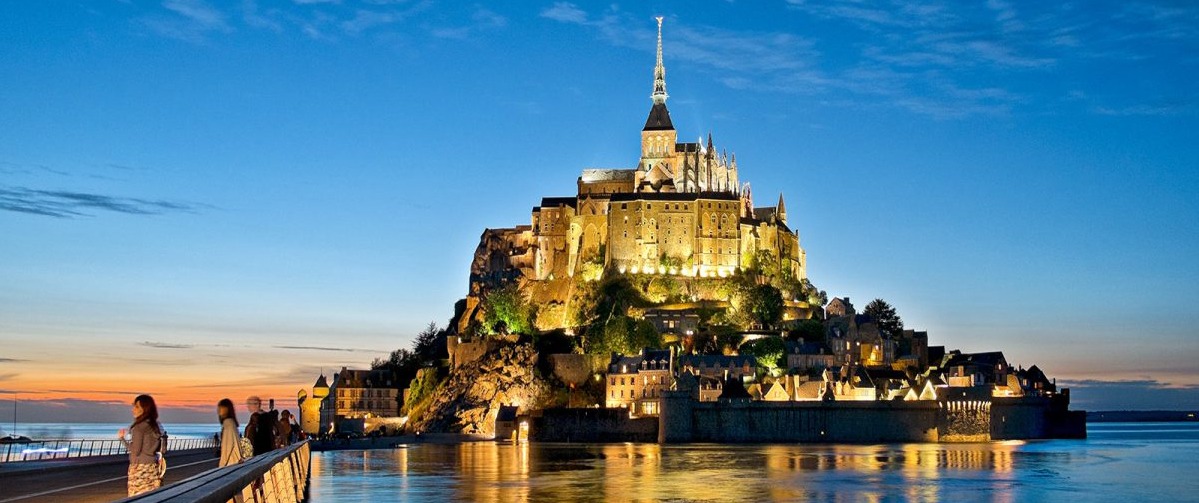

Day 5: Mont Saint-Michel and Its Culinary Traditions
No trip to Normandy would be complete without visiting the iconic Mont Saint-Michel. This medieval abbey, perched on a rocky island, is one of France's most recognizable landmarks. But beyond its architectural and historical significance, Mont Saint-Michel also has some unique culinary traditions.
I arrived early to beat the crowds and worked up an appetite climbing the steep streets to the abbey. After touring the magnificent structure, I was ready to experience one of the area's most famous dishes – omelette de la mère Poulard.
At La Mère Poulard restaurant, I watched in fascination as the chef whipped eggs in a large copper bowl with a rhythmic beating that's almost musical. The resulting omelette was unlike any I'd ever tasted – fluffy and soufflé-like, with a golden-brown exterior and a creamy center. Paired with a simple green salad and a glass of local cider, it was a meal I won't soon forget.
For dessert, I tried another local specialty – sablés, buttery shortbread cookies that are a perfect souvenir to take home. The salted butter caramels, another regional treat, also found their way into my shopping bag.
As I walked along the ramparts, taking in the breathtaking views of the bay, I reflected on how my budget-friendly approach to this trip had allowed me to experience so much.
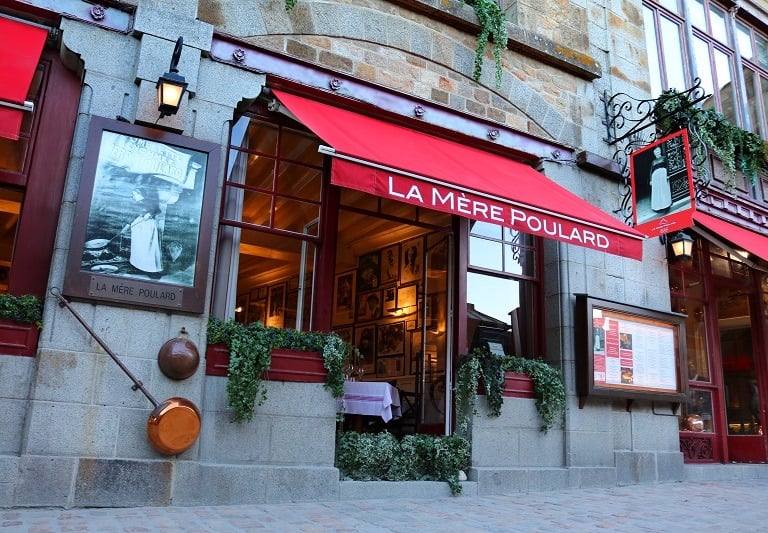

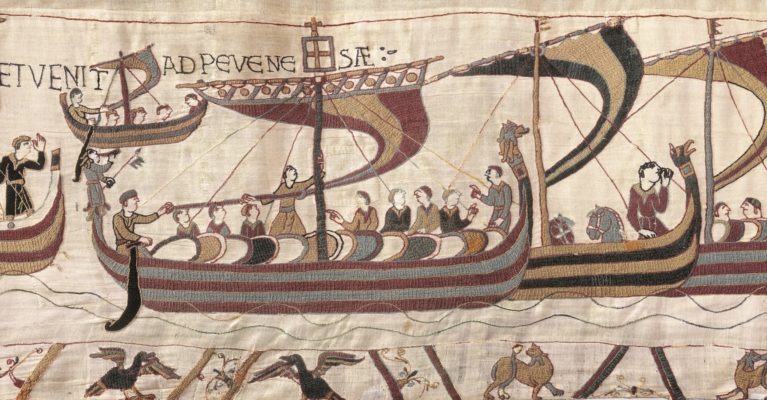

Day 6: A Day in Bayeux
My next stop was Bayeux, a town famous for its medieval tapestry but also home to some delightful culinary experiences. I started my day with a visit to the local market, a feast for the senses with its colorful displays of fresh produce, artisanal cheeses, and fragrant herbs.
For lunch, I ducked into a cozy bistro and ordered the tripes à la mode de Caen, a traditional Norman dish of slow-cooked tripe in cider and Calvados. While it might not sound appealing to everyone, this hearty, flavorful stew was a delicious surprise. It came served with the local Teurgoule, a creamy rice pudding flavored with cinnamon – a perfect sweet ending to a savory meal.
In the afternoon, I visited a small family-run butter factory. Normandy is famous for its butter, and watching the process of transforming cream into this golden delicacy was fascinating. The taste of freshly made butter spread on a crusty baguette was simple yet sublime.
As evening approached, I treated myself to a gastronomic dinner at a Michelin-starred restaurant. The chef's innovative take on Norman classics, using local, seasonal ingredients, was a culinary journey in itself. From a delicate carpaccio of scallops (another Norman specialty) to a modern interpretation of teurgoule, each dish was a work of art.


Day 7: The D-Day Beaches and Comfort Food
On my final day in Normandy, I decided to explore the D-Day beaches. While this part of my trip was more focused on history than food, I discovered that even here, cuisine plays a role in telling the story of this region.
I started at Omaha Beach, where the solemnity of the site was palpable. Nearby, at the American Cemetery in Colleville-sur-Mer, I paid my respects to the fallen soldiers. The experience was deeply moving and gave me a new appreciation for the freedom we often take for granted – including the freedom to travel and experience different cultures and cuisines.
For lunch, I stopped at a small family-run restaurant in a nearby village. Here, I tried another Norman classic – poulet Vallée d'Auge, chicken cooked in a creamy sauce with mushrooms and apples, served with a side of potato gratin. This comforting dish felt like a warm hug, much needed after the emotional morning.
As I sat there, savoring my meal and reflecting on the day, I struck up a conversation with the restaurant owner. He shared stories passed down from his grandparents about life during the occupation and the liberation. It was a powerful reminder of how food can connect us to history and to each other.
Before heading back to my hotel, I made one last stop at a local pâtisserie to pick up some Normandy specialties – buttery sablés, apple tarts, and delicate madeleines. These would be the perfect treats to enjoy on my journey home and to share with friends and family, along with the stories of my Norman adventure.
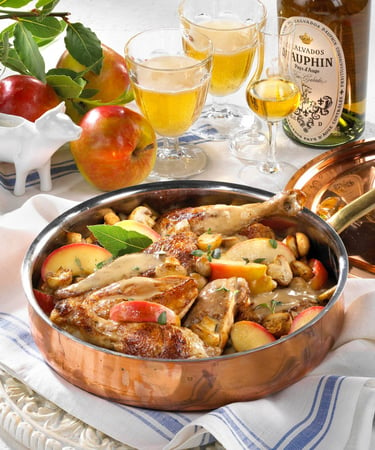

Reflections on a Culinary Journey
As I packed my bags that evening, my suitcase considerably heavier with bottles of Calvados, boxes of cookies, and wheels of cheese, I couldn't help but feel a sense of gratitude. This journey through Normandy had been more than just a vacation – it had been a feast for all the senses, an education in history and culture, and a series of unforgettable experiences.
What made it all possible was my approach to budget-friendly travel to France. By using the Internet to find cheap flights to France and great deals on accommodations and car rental, I was able to allocate more of my budget to experiencing the best of Norman cuisine. From high-end restaurants to humble farmhouse kitchens, from centuries-old recipes to innovative modern dishes, I had tasted the true flavor of Normandy.
As I drifted off to sleep on my last night in France, my dreams were filled with images of rolling hills covered in apple orchards, cows grazing in lush pastures, and the tantalizing aromas of butter, cheese, and cider. Normandy had captured my heart through my stomach, and I knew I would be back someday for another helping.
For anyone considering a culinary adventure in France, I can't recommend Normandy highly enough. And for those looking to make such a trip budget-friendly, remember that with careful planning, you can have your Camembert and eat it too. Bon voyage et bon appétit!
Welcome to my Designs
Welcome to a world of creative expression! Based in the heart of Copenhagen but reaching customers worldwide, I bring over 500 unique designs to life on t-shirts, hoodies, mugs, and more. Passionate about graphic design, I combine Nordic inspiration with global appeal to offer stylish, high-quality merchandise through Shopify/Printify and Teepublic. Whether you’re looking for a cozy sweatshirt or a personalized candle, each product is crafted to make everyday moments extraordinary.
Explore, express, and enjoy!
Welcome to my world of creative expression! Based in the heart of Copenhagen but reaching customers worldwide, I bring over 500 unique designs to life on t-shirts, hoodies, mugs, and more. Passionate about graphic design, I combine Nordic inspiration with global appeal to offer stylish, high-quality merchandise through Shopify/Printify and Teepublic. Whether you’re looking for a cozy sweatshirt or a personalized Coffee Mug, each product is crafted to make everyday moments extraordinary.
Explore, express, and enjoy!
Advertisment for our Merchndise Shop














